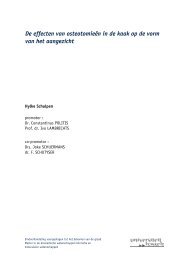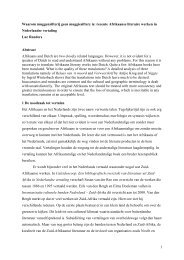Planning Problems in Intermodal Freight Transport ...
Planning Problems in Intermodal Freight Transport ...
Planning Problems in Intermodal Freight Transport ...
Create successful ePaper yourself
Turn your PDF publications into a flip-book with our unique Google optimized e-Paper software.
is based on a network model, formulated as a l<strong>in</strong>ear network flow problem with side<br />
constra<strong>in</strong>ts. A mathematical program is formulated to address this problem <strong>in</strong>corporat<strong>in</strong>g an<br />
efficient algorithm for approximat<strong>in</strong>g better the reduced costs. The algorithm comb<strong>in</strong>es the<br />
use of Langrangian relaxation with a m<strong>in</strong>imum cost algorithm and a shortest path algorithm.<br />
Tsai et al. [50] construct two models to determ<strong>in</strong>e an optimal price level and service level for<br />
<strong>in</strong>termodal transport <strong>in</strong> competition with truck transport. The authors consider the whole<br />
<strong>in</strong>termodal cha<strong>in</strong>, contrary to Yan et al. [49] who only consider rail haul. The models take <strong>in</strong>to<br />
account not only carriers’ pric<strong>in</strong>g behaviour (supply side) but also shippers’ mode choice<br />
behaviour (demand side). Solutions to f<strong>in</strong>d an equilibrium are pursued by a mathematical<br />
programm<strong>in</strong>g approach. The objective is to optimise <strong>in</strong>termodal profit with<strong>in</strong> some<br />
constra<strong>in</strong>ts, which <strong>in</strong>clude shippers’ mode choice behaviour, non-negativity of carrier price<br />
and cargo amounts and <strong>in</strong>termodal volume constra<strong>in</strong>ts.<br />
5. OPERATIONAL PLANNING<br />
Important operational decisions are the schedul<strong>in</strong>g of services, empty vehicle<br />
distribution and reposition<strong>in</strong>g, crew schedul<strong>in</strong>g and allocation of resources. The ma<strong>in</strong> issues<br />
are similar to those at the tactical decision level. However, while tactical plann<strong>in</strong>g is<br />
concerned with ‘where’ and ‘how’ issues (select<strong>in</strong>g services of given types and traffic routes<br />
between spatial locations), operational plann<strong>in</strong>g is <strong>in</strong>terested <strong>in</strong> ‘when’ issues (when to start a<br />
given service, when a vehicle arrives at a dest<strong>in</strong>ation or at an <strong>in</strong>termediary term<strong>in</strong>al,<br />
etc.).(Cra<strong>in</strong>ic and Laporte [4])<br />
5.1 Drayage Operator









